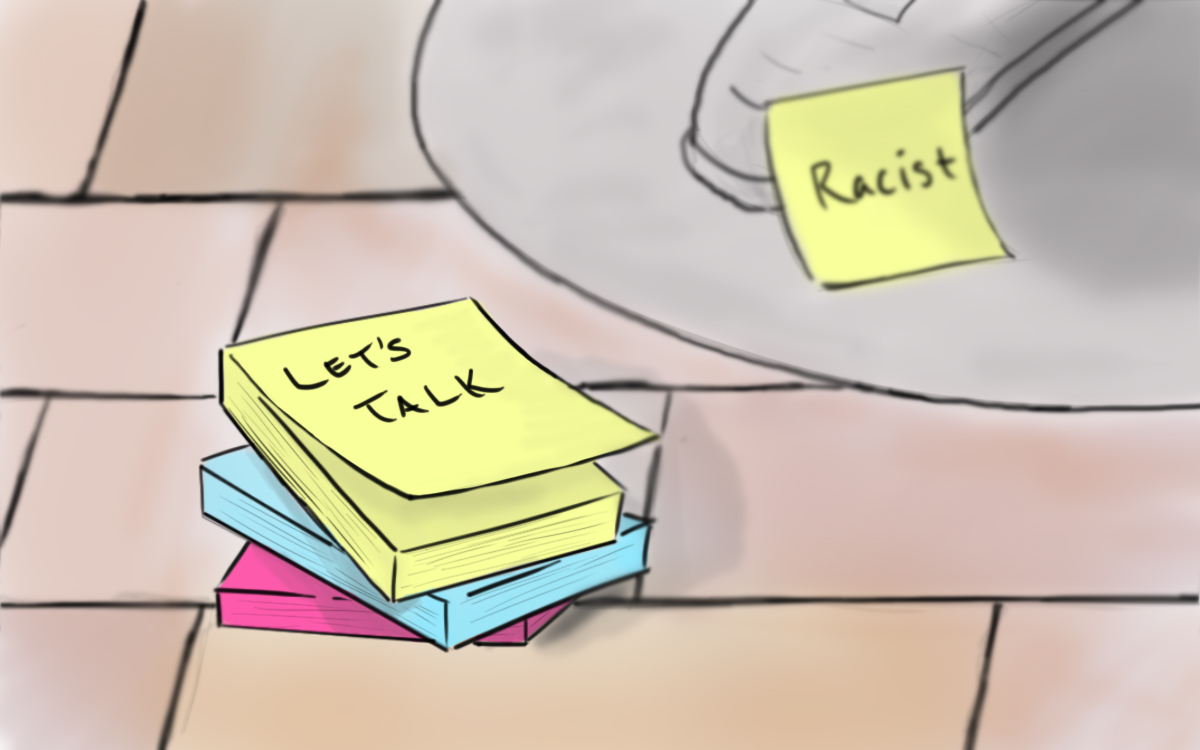Every time I visited the College of William and Mary as a prospective student, I was overwhelmed by the aura of tradition and excellence that seemed to permeate the campus, lingering in the towering trees, buildings and statues of revered figures from America’s past. The statue of Thomas Jefferson in particular has been under significant scrutiny in recent weeks after it was plastered with sticky-notes that called into question the actions of the man so many Americans adore.
Like many other students at the College, I was initially incredibly enamored of the continuous reminders of figures like Thomas Jefferson on campus. I felt they rooted my school, and therefore myself, to the core of American history. But as a scholar of Asian American Studies, which delves deeply into history, race and sociology in particular, I soon began to question our remembrance of American history on this campus. Who are we choosing to remember, and in the process, who and what are we forgetting?
If we as a community value the idea of academia, we need to go beyond the superficial understanding of slavery apologism in saying that Jefferson’s possession and treatment of his slaves was simply a product of his time.
This is why I value the actions of our sticky-note-posters — by calling into question Jefferson and his actions, they are forcing us to think beyond our superficial memories of America’s past. The College prides itself on academic pioneering and excellence. If we as a community value the idea of academia, we need to go beyond the superficial understanding of slavery apologism in saying that Jefferson’s possession and treatment of his slaves was simply a product of his time. We need to actually problematize these people’s actions, rather than continue to blindly praise their contributions to the country.
When we only remember Thomas Jefferson as a Founding Father, or fail to acknowledge his possession of slaves, we erase the trauma and legacy of slavery from the history of the nation. We ignore the perpetuation of problems created during slavery against the black members of this nation that continue to this day. We also ignore that there were other slave owners during Jefferson’s time that did not cruelly abuse and rape their slaves, and that there were others, like George Washington, who allowed for avenues of emancipation for the slaves on their plantations.
Shouldn’t we strive to understand the totality of history? To understand the founding of our nation in conjunction with the genocide of First Nations peoples? Shouldn’t we take our Founding Fathers’ contributions in writing the Constitution and Declaration of Independence in conjunction with their institutionalization of racism in this country?
I think that we can agree that it is possible to admire people while also acknowledging their flaws and the fact that for free speech to flow, well, freely, we must allow all voices to be heard.
Denying the fullness of our historical past makes it difficult to understand current phenomena afoot today. These protests about how we remember American leaders like Jefferson follow in the footsteps of those at the University of Missouri, Columbia University and Princeton University, and they come along with protests about lack of representation at college institutions, police brutality and race relations that are occurring all around the country. These developments are all connected.
It is already fantastic that the sticky notes have resulted in campus-wide dialogue about Jefferson and other revered figures on campus. I think that we can agree that it is possible to admire people while also acknowledging their flaws and the fact that for free speech to flow, well, freely, we must allow all voices to be heard. If that speech comes in the form of a disposable, non-destructive sticky note attached to the statue of Jefferson, so be it. The message may have been distributed in a method as ephemeral as sticky notes, but its impact has been powerful. In my two and a half years at the College, this is the first time a discussion about remembering the American past on our campus has ever reached beyond the classroom setting, and it even extended to outside news sources.
A great resource for looking more deeply into the legacy of some of the rarely discussed institutions of race left behind by Founding Fathers or prominent figures at the College is the Lemon Project: A Journey of Reconciliation, headed by Professor Jody Allen. According to wm.edu, The Lemon Project is “a multifaceted and dynamic attempt to rectify wrongs perpetrated against African Americans by the College through action or inaction.” The Lemon Project traces the legacy of race at the College, beginning with slavery at the College, continuing into the segregation of the Jim Crow era and the later acceptance of black students on campus, and branching out into the increasing gentrification of the Williamsburg community.
Email Pallavi Rudraraju at purudraraju@email.wm.edu.

